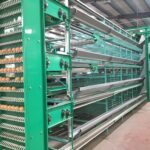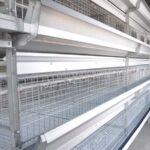Battery layer chicken cages raising management points
In recent years, with the improvement of the research and development level of animal husbandry equipment, the development of automation level has been greatly promoted, and with the sharp increase of labor costs, workers urgently need to reduce the reality of labor intensity and a large number of young professionals with knowledge and skills. The addition of this has spurred the enthusiasm of aquaculture companies to invest in automation equipment. Feeding equipment for laying hens has also undergone tremendous changes along with the development of the livestock breeding situation. The battery layer chicken cages mode has been widely recognized by the majority of laying hen farms, and the development prospects are promising.
1. Advantages of the cascaded laying hen cage mode
The battery layer cage equipment is the first choice for large-scale, intensive, automated, and standardized laying hens at home and abroad. It has the following advantages: small footprint, high space utilization, easy to achieve intensive and large-scale breeding; chicken manure layering clean, natural air drying makes chicken manure water greatly reduced, chicken manure utilization is high, and environmental pollution is minimal . The realization of fully automated control greatly reduces the number of operators, reduces labor intensity and improves labor productivity; adopting a fully enclosed feeding mode is conducive to preventing the occurrence of infectious diseases and improving the production performance of the chicken flock.

2. The management of chicken flocks in the cascading mode
2.1 Chicken into cage time
Due to the overlapping of multiple layers of cages, it is inconvenient to catch chickens, and the time of laying the laying hens can be extended appropriately, and the individual chickens are basketed when laying eggs. At this time, vaccines that require immunization such as Newcastle disease, infectious bronchitis, avian flu, and egg drop syndrome should be completely exempted.
2.2 Feed replacement
When the flock’s egg production rate reaches 5%, the prenatal feed should be replaced with a peak material. Refueling takes a one-week transition. At this time, the feed should be of good quality and the nutrient composition is stable. Do not replace the finished feed and raw materials at will.
2.3 Observing the chicken flock
It is necessary to observe whether the trough, the number and height of the trough are suitable for feeding and drinking water of the chicken, adjust the height of the drinking water system in time, check and compare the speed and quantity of the chicken feeding, and adjust the feeding density.









